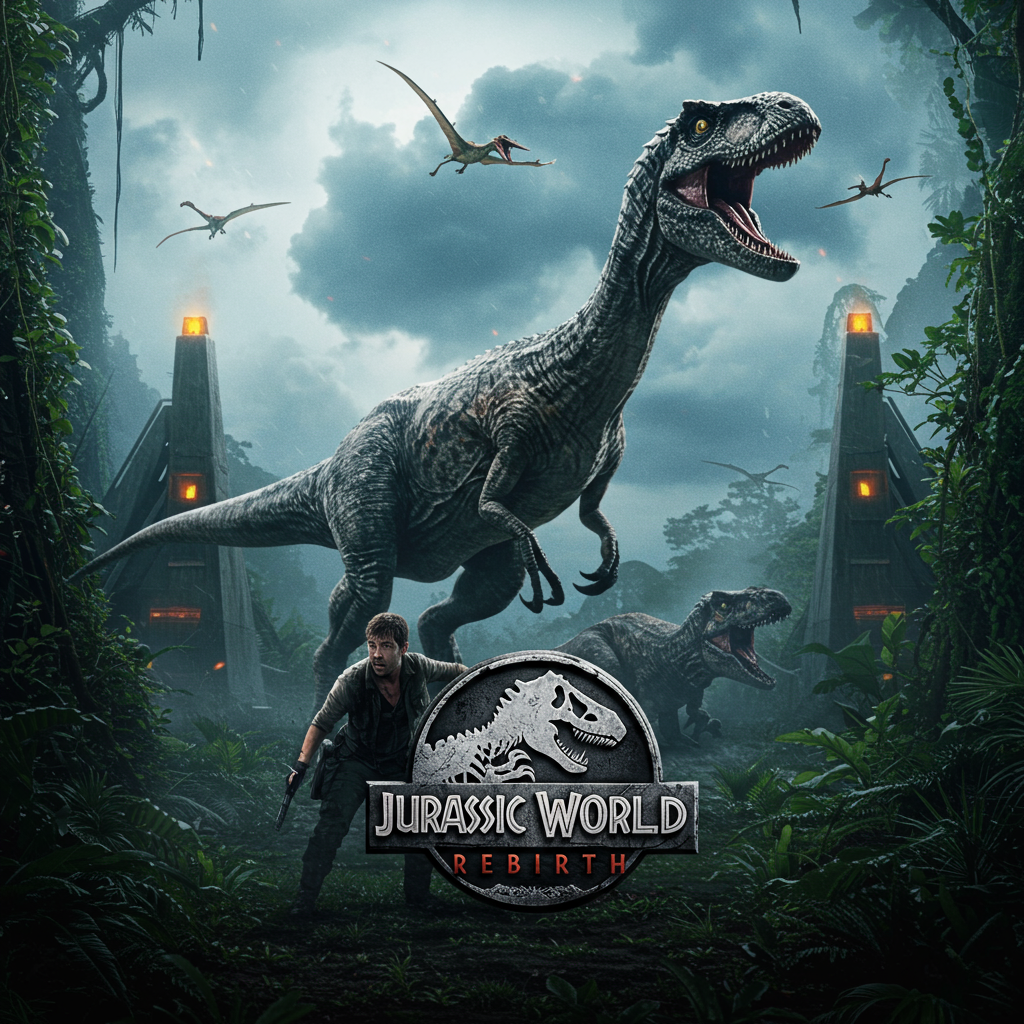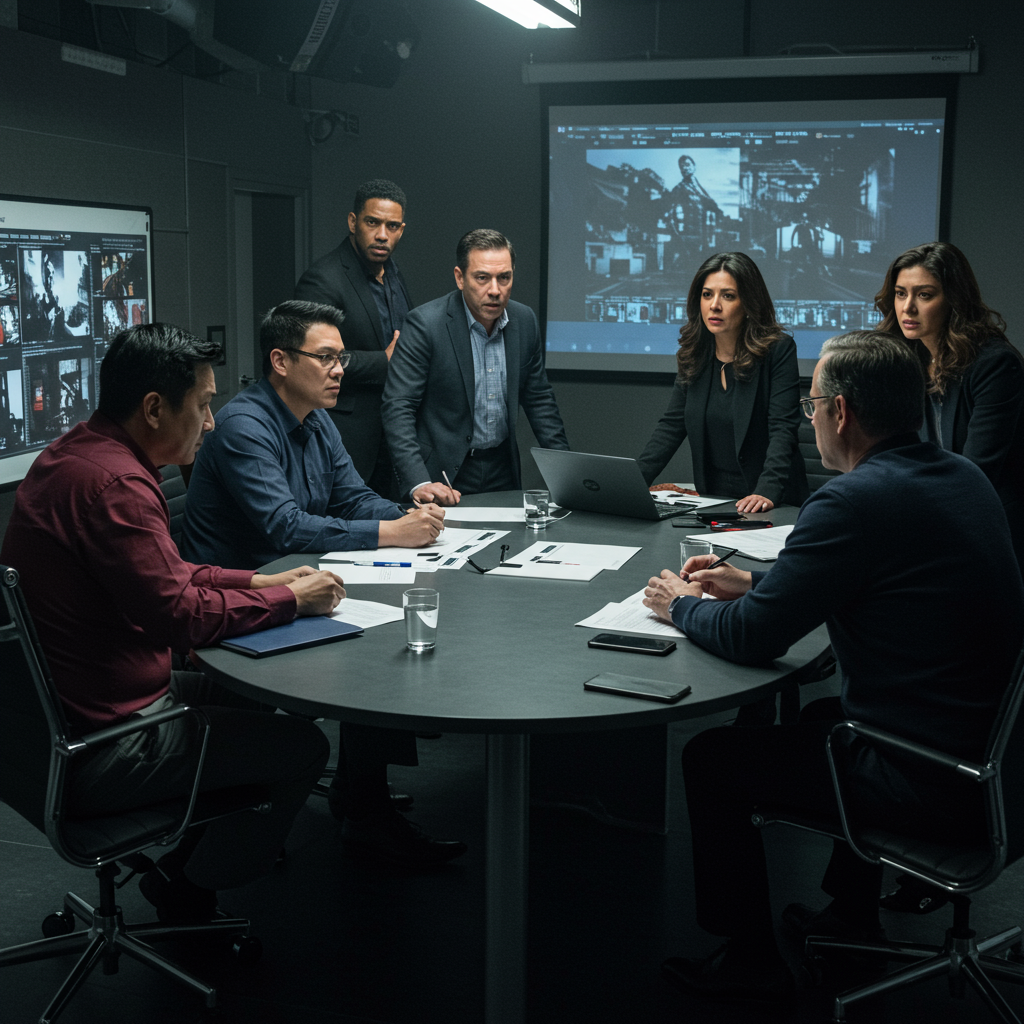After a decade that saw the “Jurassic” film series veer into perceived over-reliance on visual effects and what some critics termed “silliness,” the seventh installment, ‘Jurassic world Rebirth,’ roars into theaters aiming for a fundamental reset. Directed by Gareth Edwards and penned by original ‘Jurassic Park’ screenwriter David Koepp, this new chapter endeavors to steer the $6 billion franchise back to the tense, character-driven survival thriller roots that defined Steven Spielberg’s 1993 classic. Early reactions position it as a potentially vital revitalization, shedding the baggage of recent sequels to recapture the primal awe and terror of encountering prehistoric giants.
The Franchise’s Winding Path
For many viewers and critics, the “Jurassic World” trilogy drifted significantly from the core appeal of the original. While commercially successful, films like ‘Fallen Kingdom’ and ‘Dominion’ were often criticized for prioritizing spectacle and increasingly convoluted plots over believable human peril and grounded suspense. Excessive and sometimes unconvincing computer-generated effects became a hallmark, exemplified by moments like a Mosasaurus consuming a Pterodactyl mid-flight, a sequence cited by one reviewer as a nadir of “VFX tyranny.” The series, despite its massive box office, was seen by some as having lost its way, becoming a caricature of its former self, where dinosaurs were merely monstrous props in increasingly unbelievable scenarios.
A Deliberate Return to Origins
‘Jurassic World Rebirth’ signals its intentions immediately by featuring an entirely new ensemble cast. Not a single actor from the previous trilogy returns. This bold move is central to the film’s strategy as a “reset.” The hope is to jettison the narrative and character baggage that had accumulated, creating space for a fresh story built upon the foundation of the original’s success factors: compelling human characters facing overwhelming prehistoric threats.
The collaboration between director Gareth Edwards, known for films like ‘Monsters’ and ‘Godzilla’ where CGI is used strategically, and screenwriter David Koepp, who adapted Michael Crichton’s original novels and wrote the final draft of the 1993 script, is seen as key to this shift. Both are credited with understanding that the true heart of a “Jurassic” story lies not just in the dinosaurs, but in the relatable human reactions to them. Koepp, praised for his ability to craft ruthlessly simple, propulsive narratives tailored to suspense, returns to lean heavily on the story’s origins.
The High-Stakes Mission on Ile Saint-Hubert
The plot unfolds roughly five years after the events of ‘Jurassic World Dominion.’ The genetically engineered dinosaurs, struggling with adapting to modern life and climate change, have largely congregated in a narrow equatorial band, described in the film as a “forbidden zone.” One primary location is the decaying research facility island from the original ‘Jurassic Park’ – Ile Saint-Hubert.
The central conflict is initiated by a representative from a powerful pharmaceutical company, ParkerGenix, named Martin Krebs (played by Rupert Friend). Driven by a desire to develop a new drug, potentially a cure for cardiac disease through hemoglobin research, ParkerGenix requires fresh DNA samples from live dinosaurs within this dangerous zone. The specific targets are three immense Cretaceous-period creatures: the flying Quetzalcoatlus, the aquatic Mosasaurus, and the land-based Titanosaurus.
Krebs recruits a team of specialists for this perilous mission. Zora Bennett (Scarlett Johansson), a seasoned covert operations specialist, and her comrade Duncan Kincaid (Mahershala Ali) are lured by a substantial $10 million payday. They are joined by Dr. Henry Loomis (Jonathan Bailey), a pragmatic museum paleontologist introduced as a former student of Dr. Alan Grant, whose motivation is purely scientific curiosity – a rare chance to observe these living creatures in their natural habitat after years spent studying fossils.
New Faces Confront Ancient Terrors
The new ensemble cast brings fresh energy to the franchise. Scarlett Johansson’s portrayal of Zora Bennett is highlighted as a significant upgrade from previous female leads, offering a tough, capable character who isn’t defined by a romantic subplot and often finds herself rescuing her male counterparts. Jonathan Bailey’s Dr. Loomis provides the essential lens of scientific awe, grounding the extraordinary events in a relatable sense of wonder and observation. Mahershala Ali adds gravitas as Duncan Kincaid, a mercenary with a potentially sympathetic backstory involving past loss. Rupert Friend embodies the corporate antagonist pushing the boundaries for profit.
The mission is complicated by the unexpected arrival of a shipwrecked family: father Reuben (Manuel Garcia-Rulfo), his teenage daughter Teresa (Luna Blaise), younger daughter Isabella (Audrina Miranda), and Teresa’s exasperating boyfriend Xavier (David Iacono). Rescuing this family adds layers of human drama and echoes the original film’s dynamic of placing children in immediate danger, doubling the potential for harrowing encounters as the two groups eventually separate due to mistrust.
Crafting Suspense and Spectacle
Gareth Edwards’ direction is praised for its “very Spielberg-ian” feel, prioritizing suspense over excessive visual effects. The film is noted for a refreshing return to practical locations and potentially celluloid film stock, contributing to a more grounded look compared to the perceived artificiality of the previous trilogy. Scenes like the Mosasaurus attack are described as delivering classic “Jaws” levels of excitement, using intimidating silhouettes and building dread before dramatic reveals.
Edwards is noted for effective pacing, balancing quiet moments of observation with intense action sequences. A recurring visual technique involves a menacing shape moving out of focus in the background while a character is distracted in the foreground, cueing the audience to impending danger. While some critics found this repetitive, it underscores the film’s commitment to classic suspense tactics.
The film includes plenty of action set-pieces, from navigating the dangerous “forbidden zone” to tense encounters with various species. A sequence featuring dinosaurs hunting in a convenience store is lauded as a clever tribute to the original film’s iconic kitchen scene. Beyond the thrills, the movie also allows moments for appreciating the dinosaurs as creatures, such as a moving scene depicting a Titanosaurus mating ritual observed through Dr. Loomis’s eyes, set to John Williams’ familiar score. The depiction of the dinosaurs is widely praised as “glorious,” capturing both their terror and a surprising sense of majesty.
Hybrid Terrors and Hidden Dangers
Adding another layer of threat, the abandoned research facility on the island still houses genetically altered creatures and hybrid dinosaurs. This includes the six-legged Distortus rex, described as resembling the Rancor from ‘Return of the Jedi,’ a “turkey-bat-raptor hybrid,” and a large, misshapen T-Rex. These ‘bonus bits’ provide extra monster action and highlight the lingering consequences of genetic engineering experiments gone awry, a key theme from the franchise’s outset. The film also brings back fan favorites from the original, including Velociraptors, Dilophosaurus, and a classic T. Rex.
Critical Reception and Franchise Context
As of initial reviews, ‘Jurassic World Rebirth’ holds a “Rotten” score of 56% on Rotten Tomatoes based on 71 reviews. While this falls short of the original ‘Jurassic Park’s’ impressive 91%, it positions ‘Rebirth’ as the third highest-scoring film in the seven-movie series, sitting above all previous ‘Jurassic World’ films and even ‘The Lost World’ and ‘Jurassic Park III.’
Critical opinions are notably divided. Negative reviews criticize the film for a perceived lack of originality, emotional depth, and narrative purpose, calling it a “recycled” plot and a potential “cash grab” that relies too heavily on nostalgia without developing compelling human characters. Some felt the visuals were surprisingly underwhelming despite high production values.
Conversely, positive reviews celebrate it as a successful “return to form,” praising the thrilling set pieces, visuals, and effective suspense that recapture the spirit of the 1993 original. Edwards’ direction and Koepp’s script are commended for making dinosaurs terrifying again and delivering the “thrills and chills fans… have been clamoring for.” Many found Scarlett Johansson’s performance grounding and felt the film successfully engineered a new experience by returning to the core “source code” of simple, compelling dinosaur survival.
While it receives praise for stripping away the excesses of the second trilogy and delivering an entertaining “ride” reminiscent of the original, some reviewers note that it doesn’t necessarily make a strong case for its own essential place in the franchise’s overall mythology or clearly signal future directions. The film runs for approximately 133-135 minutes and is rated PG-13 for intense sequences of violence, action, bloody images, suggestive references, language, and a drug reference.
Frequently Asked Questions
What is the main story and cast of the new Jurassic World movie?
‘Jurassic World Rebirth’ centers on a mission led by Zora Bennett (Scarlett Johansson) and Duncan Kincaid (Mahershala Ali), mercenaries hired by ParkerGenix, a pharmaceutical company. Their goal is to collect live DNA from specific large dinosaurs (Quetzalcoatlus, Mosasaurus, Titanosaurus) in a dangerous “forbidden zone” on Ile Saint-Hubert for medical research. They are joined by paleontologist Dr. Henry Loomis (Jonathan Bailey) and the mission is complicated by rescuing a shipwrecked family (Manuel Garcia-Rulfo, Luna Blaise, Audrina Miranda, David Iacono).
Does Jurassic World Rebirth successfully return to the original Jurassic Park style?
Yes, many critics and the film’s creators intended ‘Rebirth’ as a reset to the style of the 1993 ‘Jurassic Park.’ It emphasizes human characters and suspense over excessive CGI spectacle, utilizes strategic visual effects, incorporates practical locations, and features writing by David Koepp, the original film’s screenwriter. Reviewers have praised its ability to recapture the tension and awe, though opinions on its overall success as a “rebirth” are divided.
What is the Rotten Tomatoes score and critical review consensus for Rebirth?
As of initial reviews, ‘Jurassic World Rebirth’ holds a “Rotten” score of 56% on Rotten Tomatoes, placing it as the third highest-scoring film in the franchise. Critics are split; positive reviews praise its thrilling action, suspense, and return to franchise roots, while negative reviews cite a lack of originality, character depth, and narrative purpose, arguing it feels like a recycled plot despite effective set pieces.
Conclusion: A Step in the Right Direction?
‘Jurassic World Rebirth’ makes a clear, determined effort to course-correct the franchise. By bringing back original screenwriter David Koepp, hiring director Gareth Edwards known for restrained CGI, and introducing a fresh cast focused on human vulnerability, it successfully recaptures much of the tense, character-driven survival horror that made ‘Jurassic Park’ a classic. While not everyone agrees it breaks new ground or feels truly essential to the overall mythology, the consensus leans towards it being the most effective and entertaining sequel since the original, shedding the narrative and stylistic excesses of the recent trilogy. For fans yearning for a return to dinosaurs as terrifying, awe-inspiring creatures threatening relatable humans, ‘Rebirth’ appears to deliver a thrilling, albeit familiar, ride.
References
- variety.com
- screenanarchy.com
- <a href="https://www.imdb.com/news/ni65358878/?ref=nmnwr_1″>www.imdb.com
- cosmicbook.news
- www.mariettatimes.com




